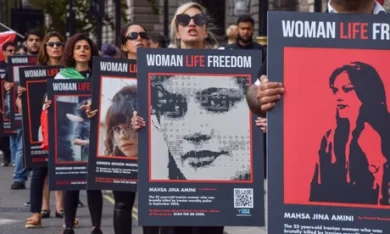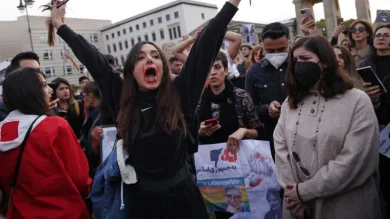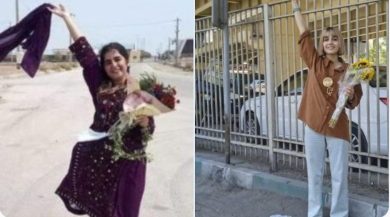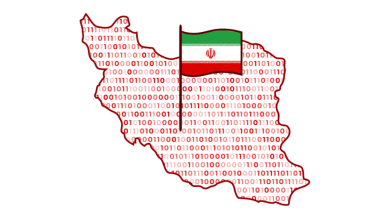The Iranian women’s revolution, embodied in the powerful chant “Women, Life, Freedom,” has not only transformed Iran’s internal political landscape but has also ignited a wave of global solidarity. Around the world, feminists, activists, and human rights defenders are uniting in support of Iranian women who have risen against decades of gender oppression enforced by the Islamic Revolutionary Guard Corps (IRGC) and the broader regime.
This revolution is not isolated — it is part of a global feminist movement challenging authoritarianism, patriarchy, and injustice. Global feminism has the power to amplify the voices of Iranian women and ensure their fight becomes a cornerstone in the worldwide struggle for equality, freedom, and human dignity.
In this article, we explore:
• The roots of Iran’s women-led revolution.
• How global feminism has embraced Iran’s fight.
• Examples of international solidarity.
• The impact of building a global coalition for change.
• Steps the world must take to support Iran’s women-led movement.
1. The Roots of Iran’s Women-Led Revolution
A. A Long Legacy of Resistance
Iranian women have fought against systemic discrimination for decades, facing:
• Compulsory hijab laws since 1981.
• Legal inequalities in marriage, divorce, and child custody.
• Restricted access to certain professions and public spaces.
Despite the repression, Iranian women have continually been at the forefront of protests—from the 1979 revolution to the 2009 Green Movement, and now, the 2022 Women, Life, Freedom uprising following the tragic death of Mahsa Amini.
B. Why Iranian Women’s Fight Resonates Globally
Iranian women’s demands—freedom of choice, bodily autonomy, equal rights—are universal feminist goals. Their courage directly challenges a regime built on the intersection of gender oppression and authoritarianism, inspiring women and activists across the globe to connect their struggles.
2. Global Feminism Rises: Embracing Iran’s Revolution
A. Feminists Around the World Respond
From New York to Berlin, from Paris to Sydney, protests erupted after Mahsa Amini’s death. Women everywhere raised the Iranian slogan “Zan, Zendegi, Azadi” (“Women, Life, Freedom”), recognizing that Iran’s fight is part of the global movement against patriarchal violence and state repression.
• Women’s rights groups organized rallies.
• Celebrities and activists amplified Iranian women’s voices.
• Academic circles and feminist organizations issued solidarity statements.
B. The Power of Digital Solidarity
Social media platforms played a crucial role:
• The hashtag #MahsaAmini trended globally.
• Campaigns like #WomenLifeFreedom and #FreeIran mobilized millions.
• Iranian activists used encrypted apps to bypass censorship and communicate with international audiences.
3. International Solidarity in Action
A. Political and Diplomatic Support
• European Parliament members wore hijabs and cut their hair in solidarity.
• Governments in Canada, Germany, and the U.S. sanctioned IRGC officials responsible for human rights abuses.
• Global NGOs demanded the release of political prisoners, especially detained women.
B. Art and Culture Join the Resistance
Artists worldwide created:
• Murals of Mahsa Amini and other martyrs of the movement.
• Music and poetry inspired by Iran’s revolution.
• Film festivals and exhibitions highlighting the stories of Iranian women.
Art transcends borders, making the Iranian struggle personal and universal.
4. Building a Global Feminist Coalition: Why It Matters
A. Iran’s Revolution is Part of a Global Struggle
The fight for women’s rights in Iran is interlinked with struggles:
• Against femicide in Latin America.
• For reproductive rights in the United States.
• Against gender apartheid in Afghanistan.
• For equal rights in Africa and Asia.
Supporting Iranian women is supporting feminism everywhere.
B. Lessons from Other Movements
Global feminism can draw lessons from:
• South African anti-apartheid activism.
• The Chilean women’s movement after dictatorship.
• #MeToo’s global reach in demanding accountability.
The Iranian women’s revolution fits into a historical pattern where international pressure and solidarity helped drive domestic change.
5. How the World Can Strengthen Solidarity
A. Amplify Iranian Women’s Voices
• Center Iranian women’s narratives in media.
• Invite Iranian women activists to speak at international forums.
• Support Persian-language independent journalism.
B. Pressure Governments and Institutions
• Push for the global designation of the IRGC as a terrorist organization.
• Demand accountability for Iranian human rights abusers.
• Block financial networks tied to the IRGC’s repression.
C. Support Digital Freedom and Security
• Provide VPNs, secure communication apps, and tech tools.
• Help Iranian activists bypass internet shutdowns and surveillance.
D. Offer Safe Spaces and Asylum
• Protect activists fleeing persecution.
• Grant emergency visas to threatened journalists, students, and advocates.
E. Maintain the Momentum
• Keep the Iranian women’s revolution in the news.
• Organize ongoing solidarity events, panels, and fundraising initiatives.
• Teach about Iran’s struggle in educational institutions globally.
Conclusion: A Revolution Beyond Borders
Iranian women have proven that their struggle is not limited to one nation—it is a global call for justice, equality, and dignity. The revolution sparked by Mahsa Amini’s death and led by countless brave women demands that the world not only watch but act.
Join Our Newsletter!
Stay informed with the latest updates, news, and ways to take action in the fight for justice and global security. Sign up now to get updates delivered straight to your inbox!





